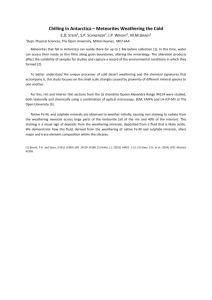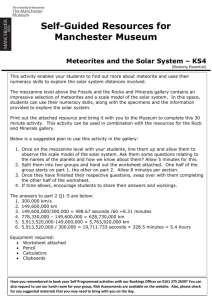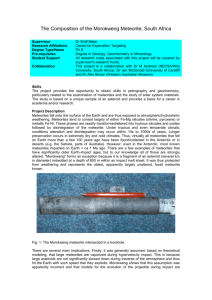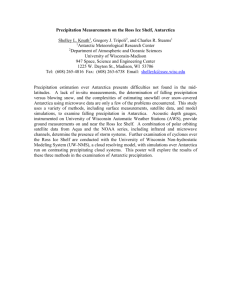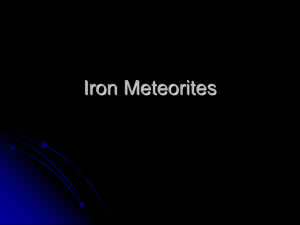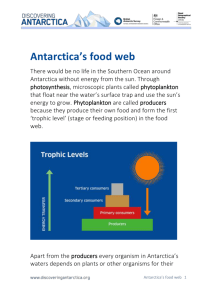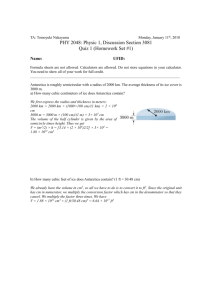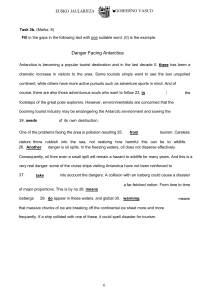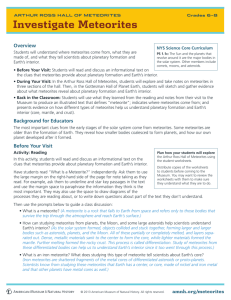Metals Minerals Meteorites
advertisement
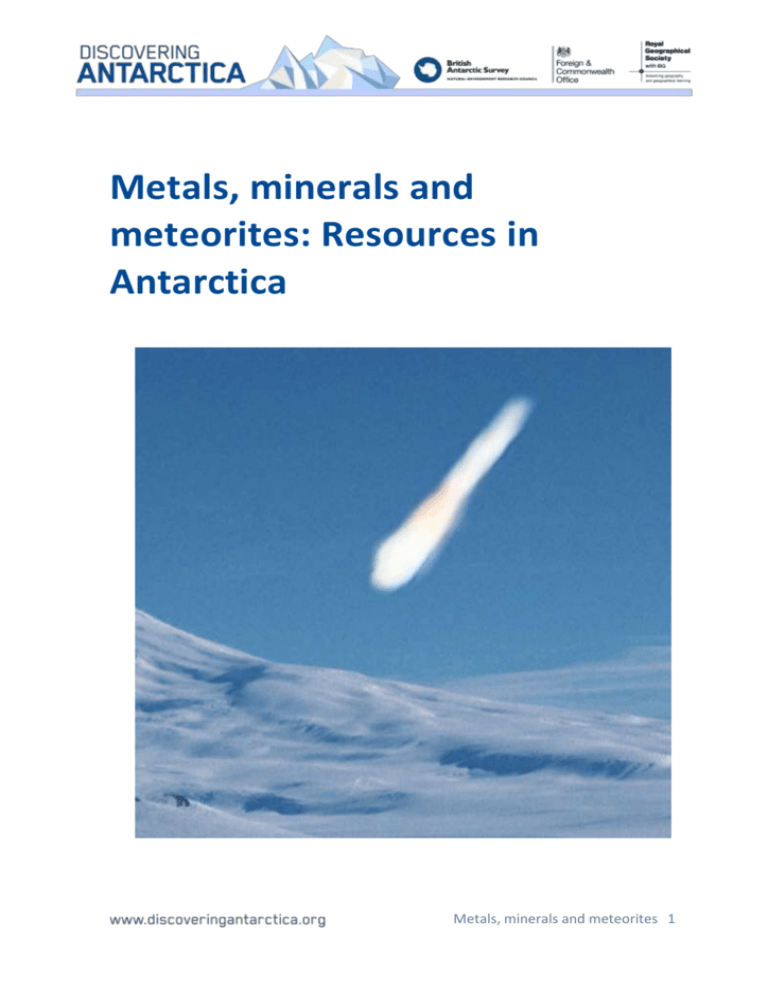
Metals, minerals and meteorites: Resources in Antarctica Metals, minerals and meteorites 1 Resource rich Since the time of the early explorers, the wealth of Antarctica's resources has not escaped the notice of extractive industries. Along the continent’s coasts and in the Transantarctic Mountains, seams of coal have been discovered, formed by rotting grassy swamps that covered the area fifty million years ago. Other minerals like iron, copper and nickel have also been found in areas like the Prince Charles Mountains in East Antarctica although not in quantities that have made mining prospectors jump for joy. The thirst for oil The modern world’s need for new sources of oil and natural gas is an ever-present danger to Antarctica’s environment. Although there is no proof, studies of rock samples have led many to speculate that the continent may hold vast oil reserves beneath the ice or the Weddell and Ross Seas. During the energy crisis of the 1970s, several oil companies looked to Antarctica as a possible solution to future world oil shortages and announced plans to exploit the continent's resources. If this became reality, super-tankers would be regular visitors to Antarctica’s waters. But thanks to the Protocol on Environmental Protection to the Antarctic Treaty, an international agreement, which came into force in 1998 Metals, minerals and meteorites 2 and has now been signed by 32 countries, there is a complete ban on mining minerals on the continent. This agreement is indefinite, unless all the Antarctic Treaty Consultative Parties agree to change the Protocol. After 2048, the Protocol may be revised, but any changes would require a three quarters majority among the Antarctic Treaty Consultative Parties. Mount Erebus in the Transantarctic Mountain range An uncertain future? As well as the rules and regulations governing Antarctica, major oil companies have stayed away because of the astronomical costs of drilling Antarctica’s oil, even if it does exist. Technology may have improved, but the costs Metals, minerals and meteorites 3 of reaching the oil, let alone transporting it from this hostile environment, currently make it very uneconomical. Nonetheless, if the world price of oil continues to rise it may become more economically attractive in the future. Mysterious meteorites Scientists have discovered that Antarctica is the world’s best place to find meteorites. An Australian expedition team found the first Antarctic meteorite in 1912, but with 25,000 more uncovered since then the continent is proving to be a collectors’ heaven. Meteorites are quite easily spotted in the ‘blue ice’ areas of Antarctica that are kept relatively free of snow thanks to constant winds. Scientists have also discovered that meteorites hidden in Antarctica’s ice are better preserved than specimens elsewhere as the ice protects them from rust, weathering and erosion. Some may be as many as 700,000 years old, and scientists think some meteorites are fragments of Mars, containing secrets of life on the planet! Metals, minerals and meteorites 4 Meteorites give us clues about the origin and composition of the Sun, the Moon, the Earth and other planets. Not surprisingly, meteorites are extremely valuable to scientists, but they are also of considerable commercial value to private collectors. Once in private collections, the meteorites may not be available for research. Some scientists are concerned that this treasure trove of meteorites will be plundered, denying them the chance to uncover more secrets about our solar system. Metals, minerals and meteorites 5
